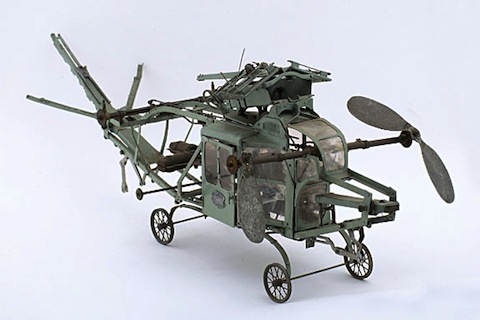
Let me start the week by directing y’all’s attention to my latest Wired essay, in which I argue for the revival of a bygone regulation: the requirement that patent applicants submit working models of their inventions. Sound onerous? Yeah, that’s the point:
The abolition of the model requirement [in 1880] was initially a boon to backyard inventors, who often lacked the capital to build detailed mock-ups of their visions. But as America’s population of skilled engineers has exploded, the patent system’s low barrier to entry has become its fatal flaw. The USPTO received 520,277 applications in 2010, a figure up nearly 500 percent since 1970. Countless inventions of dubious value or debatable novelty slip through this overwhelmed system, leading to endless litigation that has become a serious drag on American industry. “The requirements to patent have become, in my humble view, a joke,” says Mario Biagioli, a history-of-science professor at Harvard University.
The USPTO could instantly slash the number of applications by compelling inventors to submit working models whenever feasible. The most abstract inventions would be exempt, of course, but these constitute a small minority of applications; business models, for example, made up about 2 percent of the patents issued last year, and drug compositions were roughly 3 percent. The bulk of inventors would have to come up with three-dimensional examples of how their creations would look and function. Have a great idea for a longer-lasting semiconductor? A sturdier toxic-waste container? A safer lawn dart? Don’t just submit a diagram; make a model the examiner can touch.
The idea for this essay grew out of a dialogue started by my boss Chris Anderson, who posited that the tech industry ascribes too much value to mere ideas. Without the organizational chops to realize that vision, he argued, an idea is a trifling thing. That contention got me thinking about readjusting the patent system in order to reward a skillset beyond mere creativity. Re-establishing the model requirement would compel inventors to prove that they can work well with others, which is the real key to translating ideas into tangible goods.
It’s a notion that certainly doesn’t gibe with our vision of the lone inventor making magic in his garage. But that was always just an illusion—what, you think Thomas Edison worked alone?


Captured Shadow // Sep 12, 2011 at 12:49 pm
Not and expert on this, but that won’t stop me from having an opinion. I think the Patent office has to raise the bar for originality before they grant a patent.
First the background:
I invented a method to prevent cracking in the corners of boxcar doorways that my company went on to patent. I was kind of proud of that, until my friend told me his phone card company got a patent on *7. The idea was that when you went through their 411 service and got directly connected to the party you asked about you only had to hit *7 to return to the 411 operator and now no other companies could use that particular combo without a license fee.. To people in the industry either patent may have been too quickly granted. Physical models of either of those patents would have been possible for anyone with a little money but neither one would have improved given much insight to originality. Maybe a peer review process would be the way to go?
Brendan I. Koerner // Sep 13, 2011 at 4:16 pm
@Captured Shadow: Totally agree that the USPTO should raise the originality bar. But I’m sympathetic to the argument that the examiners simply don’t have the time to separate the wheat from the chaff; given the workload, each examiner has only a few hours to vet each application.
They do tend to give applicants the benefit of the doubt, though, as long as there are no glaring holes or errors. I’m just guessing, but perhaps that’s because every denial is virtually guaranteed to lead to an appeal? Means they just end up doubling their work by saying “nyet.”